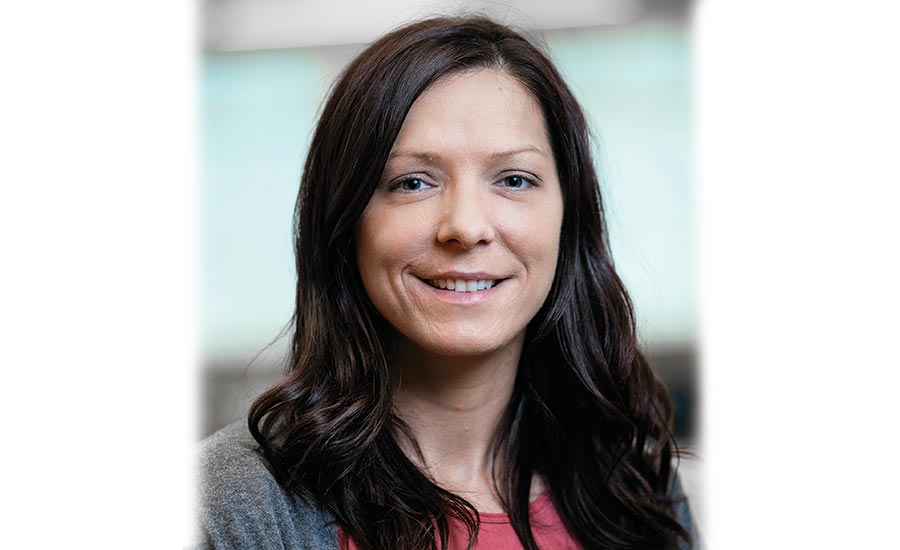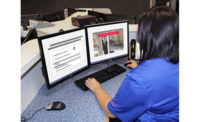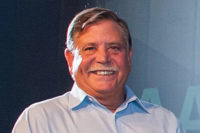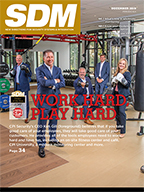Michelle Lindus, central station manager at Vivint Inc.’s headquarters in Provo, Utah, is the winner of CSAA’s 2016 Central Station Excellence Award for Manager of the Year. Lindus leads a team of 140, including monitoring agents, administrative assistants, false alarm reduction team members, and others. She is known for her aptitude of leading by example, as well as keeping informed about the monitoring business and applying procedures that result in customer satisfaction. Lindus recently spoke with SDM about how she approaches her job.
SDM: Please describe your primary responsibilities as Vivint’s central station manager.
Lindus: On a day-to-day basis my responsibilities include staff planning; budgetary implementation; ensuring high employee morale; response times for our customers; overseeing our recruiting, hiring and training process; establishing department objectives aligned with company and customer objectives; and setting performance standards and incentives, hiring standards, service level quality and efficiency metrics.
As far as our performance standards and incentive programs, we look at measuring customer-facing items, such as the quality of [the monitoring agent’s] call; accuracy (making sure that they’re following our standard procedures that have been set forth for them in training); attendance; and availability/adherence (productive work time).
We base the incentive program on the threshold that we feel is acceptable. We pay per call, based on their performance. So based on whatever their performance is, we’ll give them a threshold and then they get paid per piece of work that they’ve done, and that’s paid out bi-weekly.
I like to make sure that I’m incentivizing those that go above and beyond, because if someone is working less piecework than somebody else but they still have the same performance, they’re being compensated the same amount. So by paying per piece it actually allows them to stand out.
SDM: You have said: “My biggest responsibility and most important to me is taking care of our customers — their safety, their lives and their property. I believe that if I keep that as the No. 1 priority, then the rest falls into place.” How does that manifest itself in how you manage the central station?
Lindus: Every day, throughout the year, we’re constantly creating initiatives, going over our policies and our procedures. We funnel a lot of ideas up from our front-line employees, through a Challenge Committee, through an Idea Board, through their supervisor one on one — they’re welcome to talk to me as well. We always take all of the information that we get from them on policies and procedures into account and reevaluate them a couple times throughout the year. I think that as long as we’re keeping the customer No. 1 in our initiatives, our policies and procedures, it’s really easy.
Probably a huge success is owed to the fact that we create a product and service that simplifies the customer’s life and so we’re able to build on our own policies and procedures and product. So for me it’s all about customer safety first; if we just keep that at the forefront of our minds, everything else that we have to do — our budget, our initiatives, our policies, our procedures, our staffing, our recruiting efforts — all of that is simple because we know what we’re looking for, we know what needs to be done, we’re getting it first-hand from the front-line employees.
SDM: Please describe what SDI is and how you’ve implemented it in the central station.
Lindus: It’s called Strength Deployment Inventory. It’s a certification that we put all leadership through and it teaches leaders how to understand themselves and others at a deeper level and use that awareness to have better relationships and communication with others.
It’s not something that I myself teach — you have to have a certified trainer. Right now we use it at a leadership level only, so as soon as they come from a monitoring agent to a senior representative, which is the first level of leadership, we put them through this program. Basically it teaches us how to … understand the way that other people think and how to build relationships and have successful communication with other people. So I know, for example, on my team who is data driven, who has the drive, who has the caring factor — and I use that to my advantage. If I know that I’m seeking data, for example, then I know who has that strength.
SDM: Describe how you implemented new ways of using the outbound Interactive Voice Response (IVR) and email-to-text feature to improve operator response during emergencies.
Lindus: As far as using the outbound IVR, that was something I worked on with the emergency response team. Our other call center is in Minnesota and they do get extreme weather in the wintertime and sometimes it is difficult to get in. Sometimes there are emergencies where we need additional staff for whatever reason.
It kind of piqued my interest because, if we need people, we’ll call people. But when I started thinking about the emergency disaster response, and how to get people in here quickly, and multi-methods, and following UL regulations and all these different things, I reached out to our IT group and said we’ve got this outbound IVR already calling customers — why can’t we use it to call our employees?
I also implemented a second form of communication: it goes out simultaneously and it’s email to text. We have all the phone numbers set up in an Outlook contact list; we send an email out to employees and it converts from email to text. Everybody checks their text messages and it’s quick to know that it’s Vivint calling — Vivint monitoring needs me, I need to respond. Between those two methods we’ve been pretty successful, especially the email to text.
We have a lot of students [employed] here, so [they] are able to see their text message while they’re in class and at least can respond back or just come in right after class, whereas they wouldn’t have been able probably to pick up my call, or the outbound IVR call.
We try not to use it for situations where we just need extra staff. We try to use it for true emergencies so that they take it seriously. Example: We run a redundant station so maybe we have something where one station lost Internet connection and we’re running on one station, or Minnesota had a severe storm and they closed down the freeway.
SDM: You also spearheaded a project transitioning from spreadsheets for staff modeling and real-time tracking to the company’s Workforce IEX platform. Please tell SDM’s readers about that.
Lindus: For a very long time instead of using a scheduling software that would analyze volume and staff needed per hour/per day, we were doing all of that through our data analyst. He would analyze the data and come up with our projections and we would run that all off of Excel spreadsheets. A few of the other call centers within Vivint were using this Workforce IEX platform, which is a scheduling platform based on projections in scheduling. We were a little bit leery to convert over to it, mostly because it’s not as consistent maybe in monitoring — with different types of signals and training and all sorts of things, and we were just doing it that way for so long. And so we just had to take the plunge and trust that it’s been working with other departments. Now everything is automated and it builds projections into it, tells us what schedules we need, what spots we need to fill, when we’re projected to be understaffed — all just based off of past projections. Instead of us having to go in and reevaluate all of this consistently by hand, the system actually does it for you and tells you what your expected volume is based on your growth and your past performance.
It also has a program built into it that allows the employees to manage flexibility of their schedule. We’ve turned towards more of a flexible scheduling. We staff differently than what we’re budgeted. We over-staff to allow for flexibility and more time off. We are allowing people to leave early, come late, trade days, take days off. So there’s a program inside IEX that allows them to request time off without actually requesting paid time off; it’s called voluntary time off, so it not necessarily paid — it’s just, “I’ve got a school project or I have a doctor’s appointment; can I come in late, based on staffing?
So it’s created a lot more flexibility for the employees. It’s quicker; they input it into the system instead of going to the leadership and asking for a late start or an early out. You just put it in there and they accept as many as they can based on staffing for the day. It does create efficiency for our leadership instead of having to update everything and receive all these emails — it’s all in one spot.
More Online
Learn more about what makes Michelle Lindus a winner. Check out SDM’s coverage of the 2016 Central Station Excellence Awards at www.SDMmag.com/excellence-awards-winners









